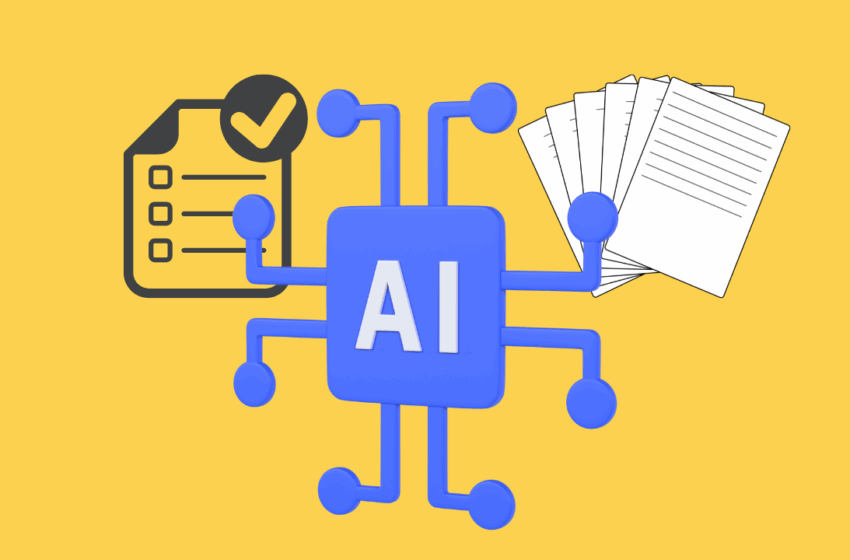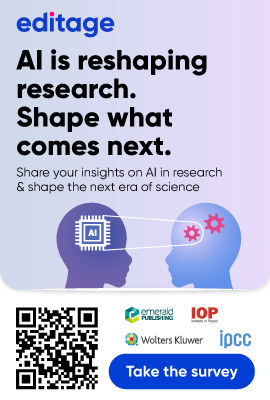How to Use AI Tools for Literature Review & Reference Management

The scholarly community has moved from “Should we use AI tools for research?” to “How to use AI tools for research?” in a short span of time. The AI boom has proven that it has a place in academia, especially when it comes to research paper writing, performing literature reviews, managing references, and improving the overall productivity of the research workflow.
This blog will explore how AI tools can be used for literature review, what features to look for when selecting an AI tool, and the top 5 tools that can simplify your literature review process.
Why Use AI Tools for Literature Review
Useful Features of AI Tools for Literature Review
Top 5 AI Tools for Literature Review
Why Use AI Tools for Literature Review
Performing a literature review is one of the most time-consuming tasks in the research workflow. While finding all papers that are relevant for your research topic may be impossible, identifying the most relevant ones can be simplified using appropriate AI tools.
Traditionally, literature review is performed using keyword-based tools. These tools might not work well because the keywords may have synonyms that do not match the right topic. Moreover, there may be papers that use the same concepts but are not identified by the tools because of a language mismatch. Basically, capturing the complete landscape of the research topic becomes challenging.
And this is where AI plays a crucial role by cross-referencing your search queries over a wider net, giving you a better view of what is out there.
Useful Features of AI Tools for Literature Review
When you do look for AI tools, here are a few features that you should prioritize to help simplify your literature review.
1. Smart search options
See if the tool offers smart search capabilities where you can filter out options that are relevant to your query. For instance, if you are a nutritionist researching practices that help improve diet habits based on regional influences, you may type in the complete query and then highlight which region you are specifically interested in (e.g., Asian countries).
2. Optimized reading
AI tools often provide an extensive list of results that they consider appropriate for your search query. Look for a “bookmark” or “shortlist” feature that will help you collate the papers that you find interesting so they can be easily referred later.
3. Personalized recommendations
Based on your research field and past searches, the tool should be smart enough to provide recommendations that are personalized to your requirements. This feature can help save you time when you are a repeat user of the application or website.
4. Summarized content
One of the biggest challenges is reading full-length papers from the get-go. So, go for tools that summarize the contents of the paper to give you an overview of the research by highlighting crucial points. Reading the summaries can help you shortlist papers of interest much faster.
5. Audio papers and translation features
Another good-to-have feature is the audio and translation capabilities within the tool. Being able to listen to audio papers is an extremely convenience-oriented feature, especially considering a researcher’s busy schedule. On the other hand, having the option to translate content to your preferred language can give you access to research that would otherwise have been difficult to understand.
Top 5 AI Tools for Literature Review
Now that you know what to look for in AI tools, here are top 5 AI-powered literature review tools for you to consider.
R Discovery1
- The R Discovery app is like a one-stop solution for literature search, giving you the option to select topics and journals of your interest to get customized search results.
- You can either search for research paper titles directly on the application or even import existing collection of research papers from reference managers like Zotero and Mendeley.
- The app searches from millions of research papers by considering relevancy, recency, and accessibility to give you the best possible outcome.
- It even provides short summaries of content that you are interested in and lets you bookmark and save papers for future perusal.
Consensus2
- This tool lets you search for papers using both natural language queries and keywords.
- It gives you the most relevant search results from its vast database linked to Semantic Scholar and Open Alex in addition to its own Consensus scholarly web.
- Each search result can be further explored in depth using the “follow-up” feature, which gives you a detailed summary of topics related to your original search query without having to provide additional context.
Litmaps3
- This tool lets you explore “literature maps” by building connections between research papers when you search through its database. The trick is to select the paper related to your topic that has most citations so you can browse through all other related literature.
- You can even refine your search and build your literature maps as you find more relevant papers related to your topic.
- Its visualization and graphical representation of all related research in one place ensures an organized literature review process.
Scite4
- In this tool, you start the search with a “seed paper” and it provides you relevant literature related to that paper. Similar to Litmaps, it lets you build your reference list by connecting related papers.
- Its smart citations feature not only give you the relationship between papers but also interprets the relationship. For instance, if there is a contrast between two papers with related topics, Scite identifies where this contrast lies within the contents of the papers.
- It gives you an idea of how the related papers support or disagree with each other, proving a holistic picture of the existing literature on your research topic.
ResearchRabbit5
- ResearchRabbit lets you search for literature using keywords, titles, author names, and DOIs.
- You start your search with a single paper and find an extensive database of related literature through the references and citations linked to that paper.
- The tool provides interactive and intuitive graphs that help you understand the relationship between papers and search for papers from a single author based on a timeline while keeping track of all your collected references.
Key Takeaway
The choice of AI tool always depends on the purpose of your work. For instance, tools like R Discovery and Litmaps lean more towards sorting of literature from extensive lists to help manage your references better, whereas Consensus and Scite provide a deep dive into existing literature and can help you in formulating research questions.
So, choose your AI tool wisely and integrate the one that works best for you in your research workflow!
References
1. R Discovery https://www.youtube.com/watch?v=Fgci6sJdyPQ
2. Consensus https://www.youtube.com/watch?v=sVgIgy_R2f8
3. Litmaps https://www.youtube.com/watch?v=gxm3ahIaO7c
4. Scite https://www.youtube.com/watch?v=AlAa1Fb_4ro
5. ResearchRabbit https://www.youtube.com/watch?v=16eOHCbi9fI









